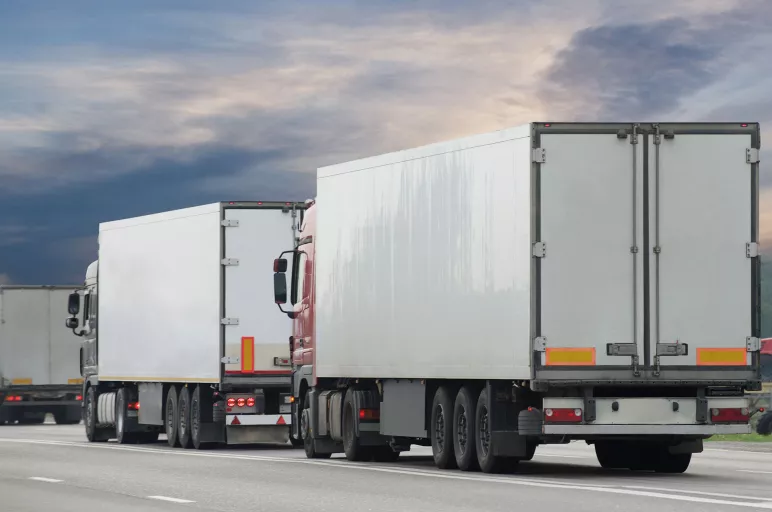
IoT and Its Impact on the Road Freight Industry
March 24, 2017 | Logistics 3 minutes read
The Internet of Things (IoT) has gained momentum within the road freight industry over the past few years. IoT is defined as the internetworking of physical devices, also referred to as “connected devices” and “smart devices,” that enables the objects to collect and exchange data. According to a DHL and Cisco Trends report, IoT utilization in the supply chain and logistics industry could generate USD 1.9 trillion in value by 2025, out of the overall USD 8 trillion in IoT value generated globally.
The logistics industry was an early adopter of technologies like sensors, micro-processors and wireless connectivity for their operations, as they connect and collect real-time data across different assets like warehouses, roads, oceans and even people in the entire value chain of the logistics industry.
Trucking operators require trucks to reduce CO2 emissions to 25% by 2025, and IoT technology in trucks like GPS, sensors, electronic logging devices (ELD) can track fuel efficiency of not just routes, but also how drivers operate their vehicle. Many companies have adopted some of these IoT technologies, and have enjoyed the benefits that IoT provides on visibility and movement of goods to ensure cargo arrives at the right time and place.
Sensors
- Sensors in monitoring fleets - Telematics sensors in trucks enables monitoring of vehicles, provides visibility by transmitting data on location and notifies of road conditions that could impact scheduled deliveries. For example, Teologis, a leading telematics provider, already provides the service in this space.
- Sensors for predictive asset management- Sensors in trucks also indicate insights on regular maintenance needed for trucks and lets drivers know when the vehicle needs to be checked on brakes, oiling etc. to avoid severe damage. This system decreased potential danger to truck drivers through constant condition monitoring of vehicles and helped save 30% in maintenance of vehicles.
- Sensors in monitoring temperature conditions - Similarly, DHL’s Smart Sensor monitors temperature conditions during transportation. Another advantage of sensors in trucks is that they ensure optimal utilization by monitoring fleets’ load capacity and populates data on spare capacity for route optimization.
- Sensors in detecting thefts - Telematics sensors in trucks can also transmit data on goods stored in trucks and indicate if any goods are missing to detect any possible theft, as this is a huge loss to shippers and logistics service providers each year. For example, Freight Watch recorded around 900 theft incidents across the United States.
Electronic Logging Devices (ELD)
Per the Federal Motor Carrier Safety Administration (FMCSA), by December 2017, installation of electronic logging devices (ELD) are expected to become mandatory. ELDs enable commercial transportation providers to track Hours of Service (HOS) compliance rules, and drivers are required to keep Record of Duty Status (RODS). An ELD is connected to the truck’s engine to record its movement and track commercial truckers’ duty hours, typically 60 to 70 hours for 7 to 8 consecutive days based on regulatory requirements.
- ELD benefits to the trucking industry - ELD devices save time as they eliminate writing up duty hours in paper log books, and put less pressure on drivers to go beyond the legal hours of service limits as compared to paper log books. Per the American Transportation Research Institute (ATRI), truck drivers driving over prescribed limits beyond 60-70 hours of service are ~45-50% more likely to be involved in an accident than those in compliance. Tracking hours of service on an Electronic Logging Devices (ELD) are updated to prevent roadside violations.
Wearable Devices for Health and Safety
Applications in wearable devices like smartwatches can track and monitor driver’s performance such as hard acceleration, harsh braking. It also alerts the drivers to dangerous routes and guides them to changing lanes to prevent accidents. Caterpillar, the construction and mining equipment company, has installed infrared cameras in their vehicles that tracks drivers’ attention and fatigue levels on the road. This solution activates audio alarms and seat vibrations to prevent accidents.
The Way Forward
Many logistics companies have already utilized IoT capabilities and applications like connected devices and sensors to gain visibility across various aspects of the supply chain from operations to finance. Buyers need to make predictions about their business and their customers to solve problems through IoT to allow for better customer engagement and more informed decision making. This can happen, but they must garner insights into supply and demand factors, and client demands can be met with further intelligence.



